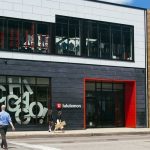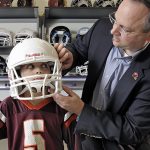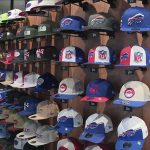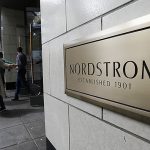Under Armour, Inc. got a boost from an increase in average selling prices, the addition of cleated footwear, and an expansion of its owned-retail business in the first quarter that all helped fuel continued strong top-line growth for the company. The company has settled into a trend of more moderate growth in revenues that will apparently be driven by footwear and owned-retail going forward. Under Armour still expects to see footwear become larger than apparel as a whole, a goal that will be made all the more achievable by the addition of it first non-cleated footwear for 2008. On the owned-retail front, UA expects to see about 15% of its top-line growth come from the direct-to-consumer business, fueled by continued expansion of outlet stores, growth from Internet and catalog sales, and the move later this year into the full-price concept store genre.
There are some challenges that may have made Wall Street skittish last week, though, as Under Armour shares declined 8.4% for the week to close at $45.17 on Friday. Gross margins have been hurt by the addition of cleated footwear to the mix, and the company will also rely more on lower margin domestic suppliers this year to meet demand. UA now expects gross margins to improve only 10 to 20 basis points this year, compared to previous guidance that called for an improvement of 80 to 100 basis points. The company will also see its marketing spend for Q2 exceed the high end of its range due to investments in the Click Clack II program. Diluted earnings per share for second quarter is now expected to come in between two cents and three cents for the period, which would represent a 40% to 60% decline in earnings versus the year-ago period when diluted EPS came in at five cents per share.
Still, management is confident that they will grow net revenues and income from operations between 30% and 35% for the full year. The company reiterated its expectations for annual net revenues in the range of $560 million to $580 million, delivering $74.5 million to $77.5 million in income from operations.
Chairman, President and CEO Kevin Plank said that 10% of the companys apparel growth over the last 12 months was the result of higher selling prices, which is clearly the result of a diversification of the product line into more loose-fitting product, fleece and outerwear. First quarter average selling prices in apparel were up 8%, while ASPs including footwear were up about 11% for the period. At the end of Q1, the sales ratio between compression and loose-fitting silhouettes was 50/50 in the U.S., despite that fact that ColdGear Mock Neck styles posted a 60% increase for the period. Under Armour clearly saw a benefit from the cooler spring. The ratio in Europe was roughly 80/20 in favor of compression.
The increase in compression sales drove roughly 25% of the growth in the mens business for the quarter, but the company also saw strength in newer categories as well. Golf grew to be the third largest category for mens apparel in Q1 and baseball apparel was described as “not far behind” after growing 127% in the period, due in large part to the “halo effect” surrounding the companys launch of baseball cleats.
Based on point-of-sale data compiled by SportScanINFO, Under Armour grabbed 15 points of share in the baseball/softball cleated footwear category in the retail first quarter-to-date in the Sport Retailer sector, and had accounted for 17% of the market in the retail fourth quarter through January. The addition of the cleated footwear program hurt margins, with 175 basis points of the total company gross margin decline in Q1 coming as a result of footwear.
The temporary shift of sourcing to shorter lead-time suppliers contributed 75 basis points of the GM decline. A shift from retailer discounts to in-store marketing and SG&A, and the increased positive impact of the direct-to-consumer business partially offset the GM declines elsewhere.
The direct-to-consumer business grew 87% in the first quarter and doubled for the trailing twelve months. Under Armour will test its first full-price concept store in the fourth quarter, which is expected to be a 4,000 sf to 5,000 sf store located close their Baltimore HQ. The company also opened three additional outlet stores for the year-to-date period, bringing total store count to 14 stores. They expect to open three to four more stores this year. Under Armour expects to invest approximately $6.5 million in its direct-to-consumer business this year.
>>> The company picked the category with some of the lowest margins when they got started in footwear, but that successful entry strategy will enable them to add higher margin non-cleated footwear next year
| Under Armour, Inc. | |||
| First Quarter Results | |||
| (in $ millions) | 2007 | 2006 | Change |
| Revenues | $124.3 | $87.7 | 41.8% |
| Apparel | $103.6 | $81.7 | 26.9% |
| Mens | $68.5 | $53.7 | 27.6% |
| Womens | $24.7 | $21.0 | 17.7% |
| Youth | $10.5 | $7.0 | 49.0% |
| Footwear | $11.8 | — | — |
| Accessories | $5.3 | $3.7 | 43.5% |
| Gross Margin | 48.7% | 50.5% | -180 bps |
| SG&A % | 35.8% | 34.4% | +150 bps |
| Net Income | $9.9 | $8.7 | +13.8% |
| Diluted EPS | 20¢ | 18¢ | +11.1% |
| Inventories* | $80.1 | $53.5 | +49.7% |
| Accts Rec* | $84.6 | $63.2 | +33.8% |
| *at quarter-end | |||









